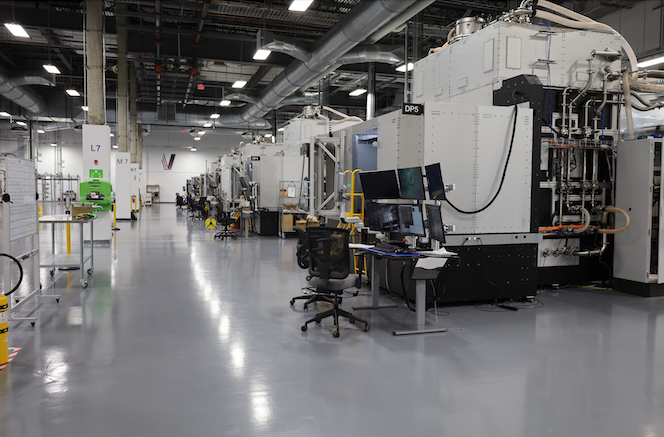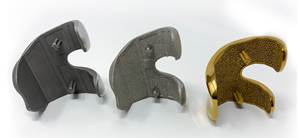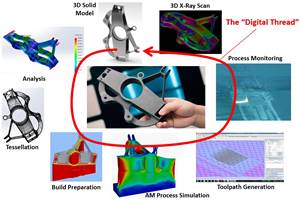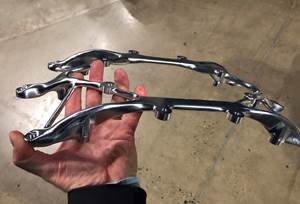Examining Productivity Gains Set to Transform Additive Manufacturing
Additive manufacturing is in its second hype cycle, with companies weighing its endless design capabilities against cost and production output.
If you are familiar with the Gartner Hype Cycle, you know that every new innovation undergoes a period of excitement that eventually crashes when expectations have outpaced what the technology can really do. As this happens, the new technology moves from the “peak of inflated expectations” into the “trough of disillusionment”, which is often where many new technologies wallow and die. If, however, a technology continues to develop and meet expectations, then it can crawl out of this low point and up the “slope of enlightenment” to gain solid footing in the “plateau of productivity” where the technology finally achieves more realistic expectations.
Additive manufacturing (AM) has been undergoing this hype cycle for over a decade now. In fact, I think we are in AM’s second hype cycle with the first being in the early 1990s when 3D printing found initial commercial success thanks to 3D Systems. The hype of what polymer 3D printing could do back then quickly exceeded the reality of what it was capable of, and many lost interest in the technology once the “prototyping problem” had been solved.
As the era of metal 3D printing dawned in the early 2010s, we entered a new hype cycle under the guise of additive manufacturing, which enabled layer-wise fabrication of functional metal parts and end-use components. To change the perception, 3D printing was rebranded as AM to indicate that it could now compete with other manufacturing technology, such as subtractive and formative processes, to produce end-use parts.
As with any new technology, though, the hype again outpaced the reality, especially in terms of cost. Part of this was rooted in the lack of understanding that we had about metal AM processes like powder bed fusion and directed energy deposition, increasing uncertainty and risk of use and adoption. We simply did not have hundreds or thousands of years of experience with AM like we did with subtractive and forming processes, respectively, and no one wanted to repeat the mistakes that set back other manufacturing innovations.
As if the added risks were not enough, the economics of AM exacerbated the problem. The hype was driven by what I and a colleague dubbed “economies of one” in manufacturing, namely, the ability to produce customized or tailored parts on demand via increasingly small lot sizes at a reasonable cost. The financial benefits arose from the unique economic drivers behind AM. While things looked good on paper, in reality, the costs of machines (and subsequent build time of a part), metallic powder feedstock and postprocessing drove costs so high that few AM business cases made sense.
Thankfully, some companies were not deterred, particularly in the aerospace and medical industries where weight savings and geometric complexity were easily translated into added value worth the extra cost, and particularly with expensive materials like titanium. Meanwhile, the defense industry pursued AM as a solution to improve logistics and sustainment of legacy systems in its aging fleets. Combined, this incentivized federal and corporate investments that led to the development of new standards, reductions in material costs, and improvements in machine reliability and throughput, allowing more and more companies to climb the “slope of enlightenment” and reach the hallowed “plateau of productivity.”

A fleet of 100-kW powder bed fusion systems, each with an array of 150 lasers, that can deliver up to 2 MW of power during production is enabling VulcanForms to produce metal AM parts faster at substantially lower costs compared to what companies can do using commercially available AM systems. Photo Credit: Suzanne Pinto, VulcanForms
Achieving this plateau is also getting easier thanks to advancements in multi-laser systems such as Velo3D’s Sapphire XC 1MZ with eight 1-kW lasers and SLM Solutions’ NXG XII 600 with 12 1-kW lasers. Even though more lasers does not always translate into cheaper parts, it does improve throughput and reduce lead-time. Increase that to 150 lasers delivering 100 kW of power like VulcanForms has recently announced, and you begin to see entirely new plateaus of productivity that were previously unobtainable. (Full disclosure, I advise VulcanForms and have received a small equity stake for my help.)
While VulcanForms may seem like just another step in the ongoing “laser wars” of powder bed fusion providers, it is actually the first time a company is not focused on making better AM systems to sell to other companies to make AM parts. Instead, VulcanForms is making better AM systems to make cheaper and faster AM parts. It is worth repeating: their goal is not to produce better and faster AM systems; their goal is to produce AM parts faster and cheaper.
At first blush, this may not sound much different, but in reality, it completely changes your mindset when your entire business is built on producing AM parts, not selling AM machines. It reminds me of when Henry Ford realized the productivity gains that could be made when the parts moved to the workers via the assembly line versus the workers moving to the parts. This too may not have seemed like much of a shift at the time, but as more and more capabilities were vertically integrated, a new plateau of productivity was achieved, giving birth to mass production and the industrial revolution of the 20th Century.
Only time will tell if the shift in thinking by VulcanForms will usher in the AM boom like Ford did with the moving assembly line, but productivity is certainly shifting to a new plateau — and machining professionals should pay attention, lest you become the next acquisition target!
Related Content
4 Ways 3D Printing Is Changing Medical Implants
Additive manufacturing provides new ways of making medical implants, but its impact is greater than this. How 3D printing is changing medical manufacturing and improving patient outcomes.
Read MoreGo Digital: How to Succeed in the Fourth Industrial Revolution With Additive Manufacturing
The digitalization of manufacturing is set to transform production and global supply chains as we know them, and additive manufacturing has been leading the way in many industries.
Read MoreIn Moldmaking, Mantle Process Addresses Lead Time and Talent Pool
A new process delivered through what looks like a standard machining center promises to streamline machining of injection mold cores and cavities and even answer the declining availability of toolmakers.
Read MoreUsing Topology Optimization to Lightweight: A Paradox for Machining
Today’s computer software can just as easily generate lightweight shapes for subtractive processes as it can for additive ones, but it increases cost and waste to make them.
Read MoreRead Next
The Cut Scene: The Finer Details of Large-Format Machining
Small details and features can have an outsized impact on large parts, such as Barbco’s collapsible utility drill head.
Read More3 Mistakes That Cause CNC Programs to Fail
Despite enhancements to manufacturing technology, there are still issues today that can cause programs to fail. These failures can cause lost time, scrapped parts, damaged machines and even injured operators.
Read More


















.png;maxWidth=300;quality=90)







